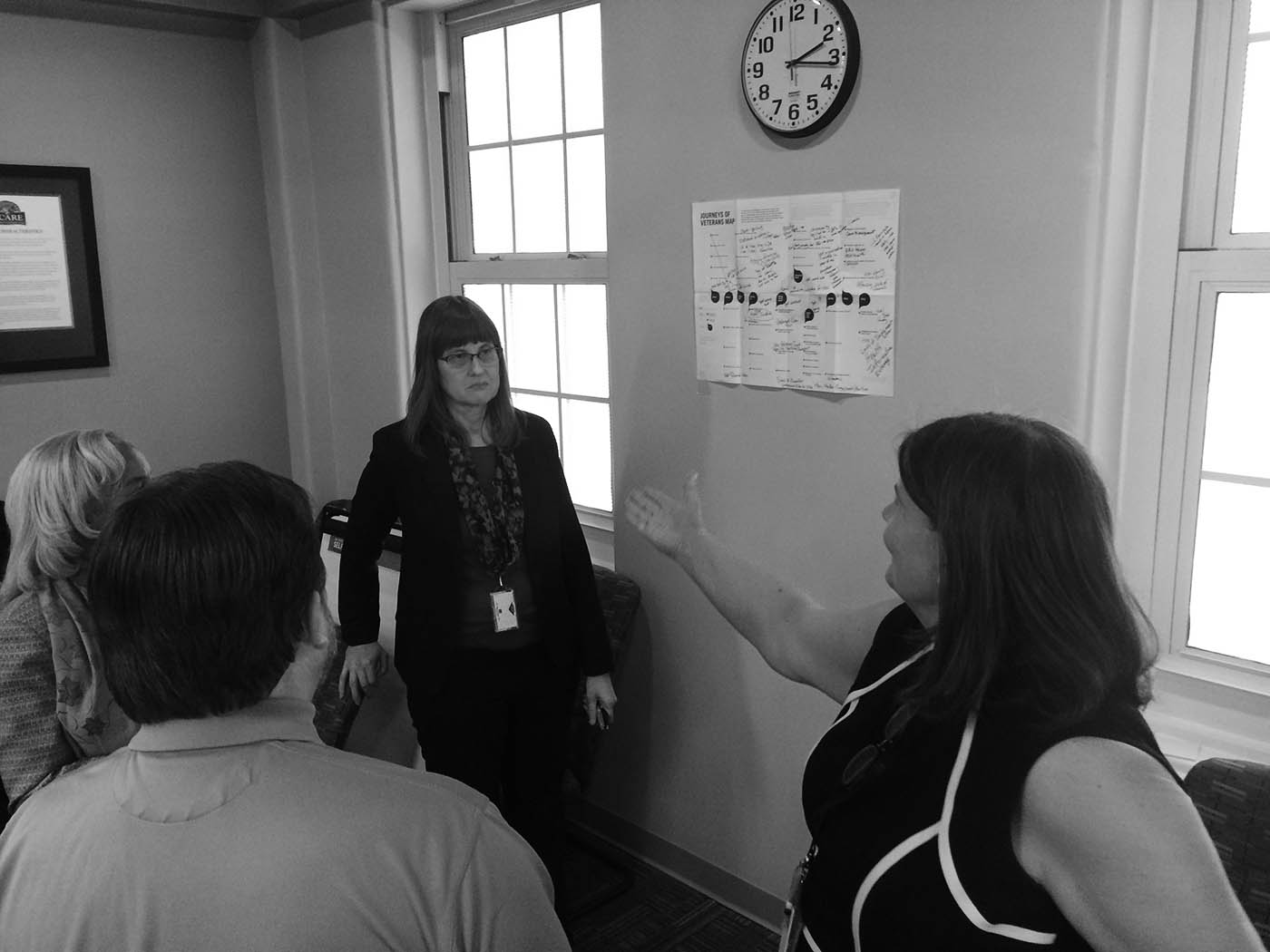Patient Advocacy Tracking System Redesign
Redesign service? Or redesign product?


Project Duration: ~6 Months: Research: Winter 2016-2017; Design: Fall 2017
Project Type: Federal
Agency Partner: Department of Veterans Affairs (VA)
Role: Lead
Stakeholders: Veterans, Caregivers, VA Patient Advocates, VA Medical Center Directors, VA Administrators, Congress
Design Phases: Research, Design, Implementation (ongoing), Measurement (2020)
Software: HTML, CSS, JS
Skills: Design Management, Research, & Strategy; User Experience Direction; Service & Product Design
Product Design Output: See the prototype of the PATS System redesign
Implementation: 152 VA Medical Centers, affecting data for 9 million veterans annually and 340,000 VA employees
Background
The Patient Advocacy Tracking System (PATS) allows VA employees
known as Patient Advocates (PAs) to document and track the resolution
of complaints and compliments inside VA Medical Centers. Required by
law, this documentation allows the aggregation and evaluation of and
strategy for non-clinical veteran concerns. These concerns are
expansive in scope; they can be anything from a veteran inquiring
about their medical records, to feeling disrespected by a VA employee
or volunteer, to wanting to discuss the parking situation. The PAs
capture all these issues in the system so that VA has a robust data
set on veteran issues 1
from which to make
improvements to their non-clinical services.

Some of the cringe-worthy paths to issue resolution imagined by the design team prior to research. VOICE was an early name for the project.
The PATS system is, therefore, essentially a data entry system. The PAs' job, however, requires much more than simple data entry. To address issues of respect, of confusion, or anger requires deep social skills. The PAs soothe hurt feelings and assuage anxieties; they understand the red tape, the relationships, and the hierarchies inside the medical center. 2 In the midst of all that, they then have to enter the data into the PATS system.
Research
In the winter of 2016-2017, VA approached the Lab at OPM Design
Team requesting to redesign the PATS system. The system had been
implemented in the 1980s and hadn't been updated since the 1990s. Each
entry requires a unique tag, which is typical in the healthcare space,
but no tags had ever been edited out of the system. Around 150 unique
tags for veteran issues clogged up the system, some of which were used
as catch-alls, while others were super specific, including one
specifically for doors that wouldn't close completely. The team spent
six weeks meeting with PAs, hearing about their days, and observing
their workflows. Below, find some of the highlights of the research we
completed.
Designer's Note: Some details of this research, such as names and places, have been removed or made more general for privacy purposes. Some recommendations have been redacted for the same reason. The capitalization of the word "Veterans" is VA policy.
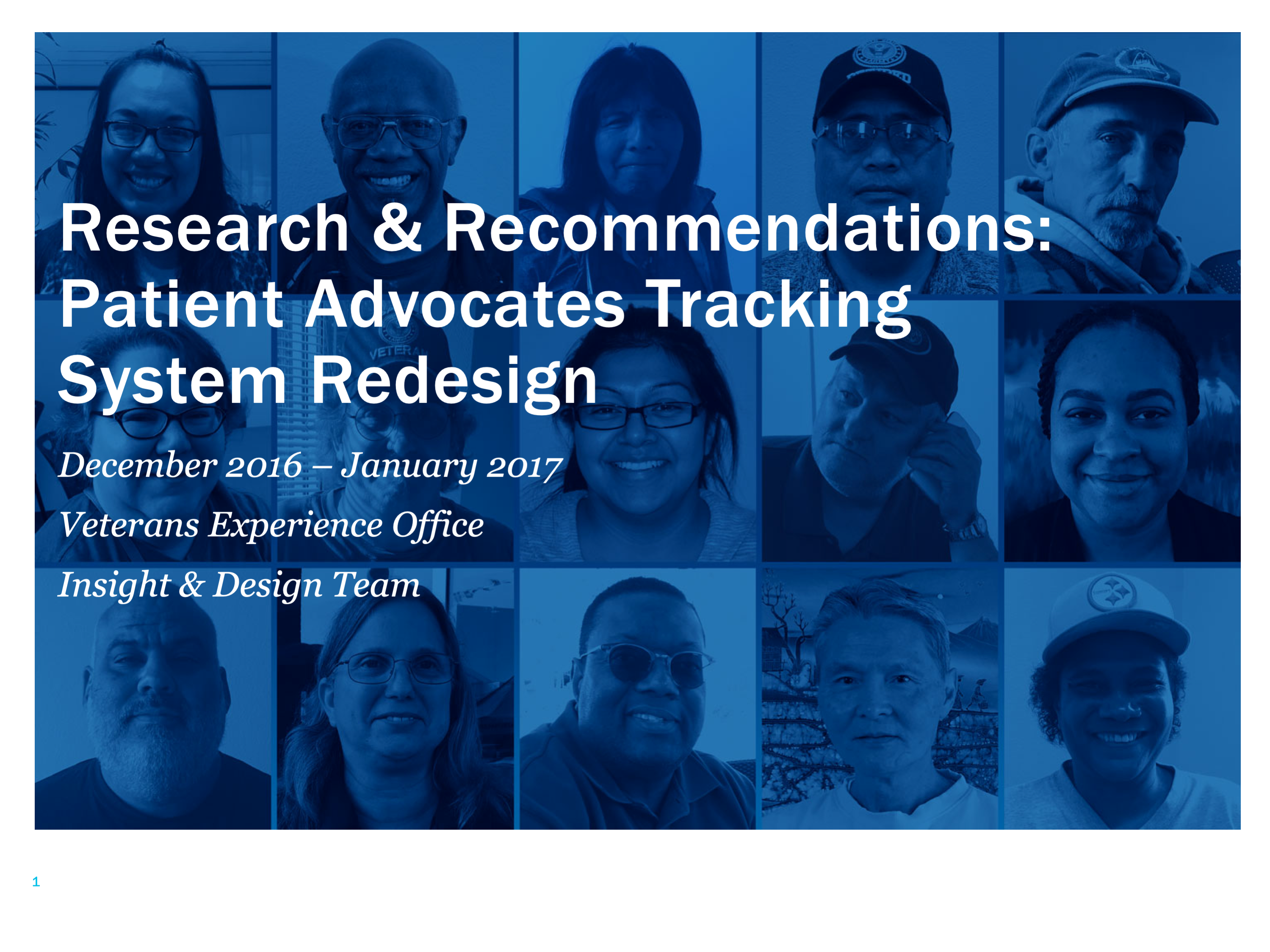
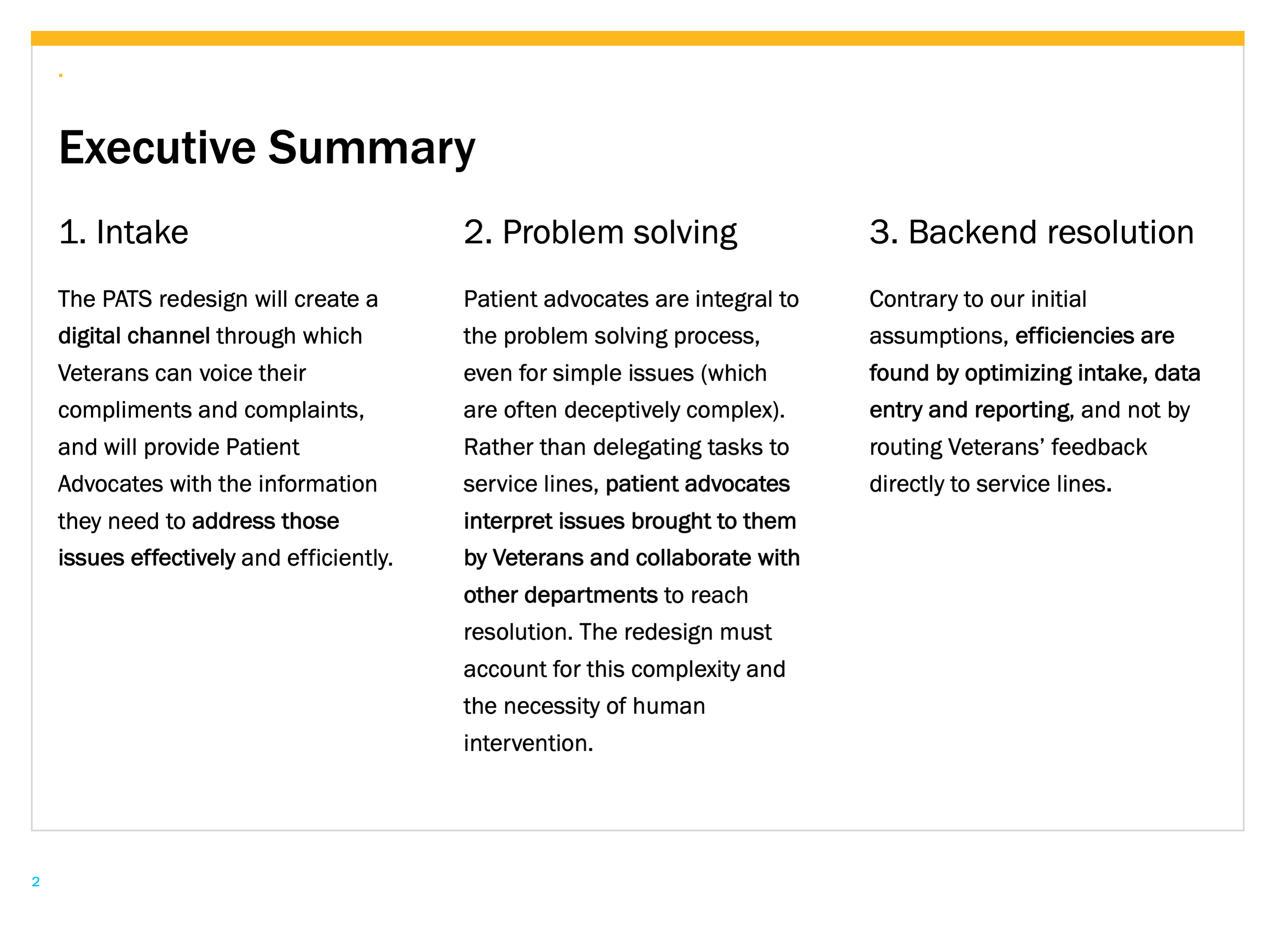
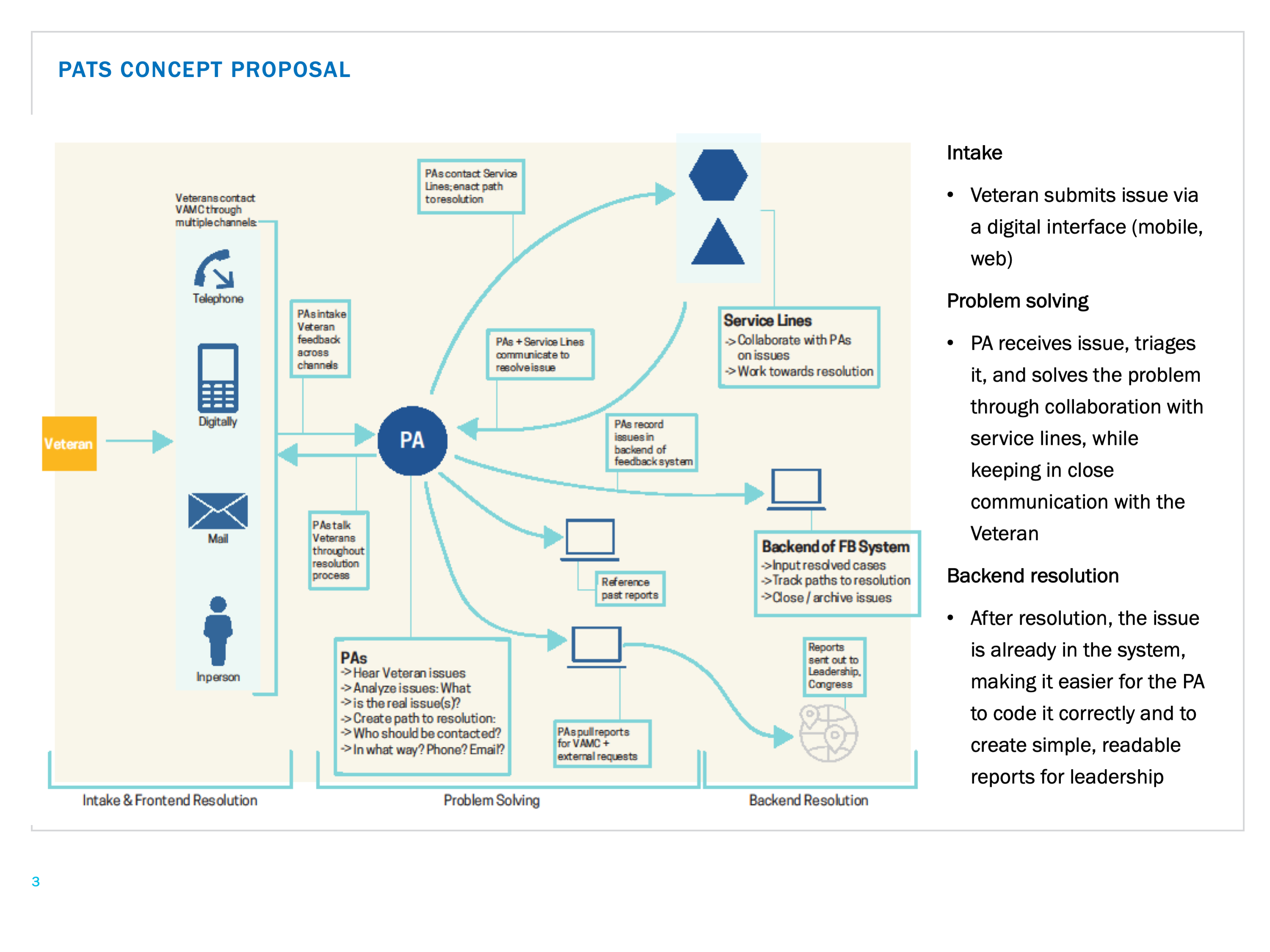

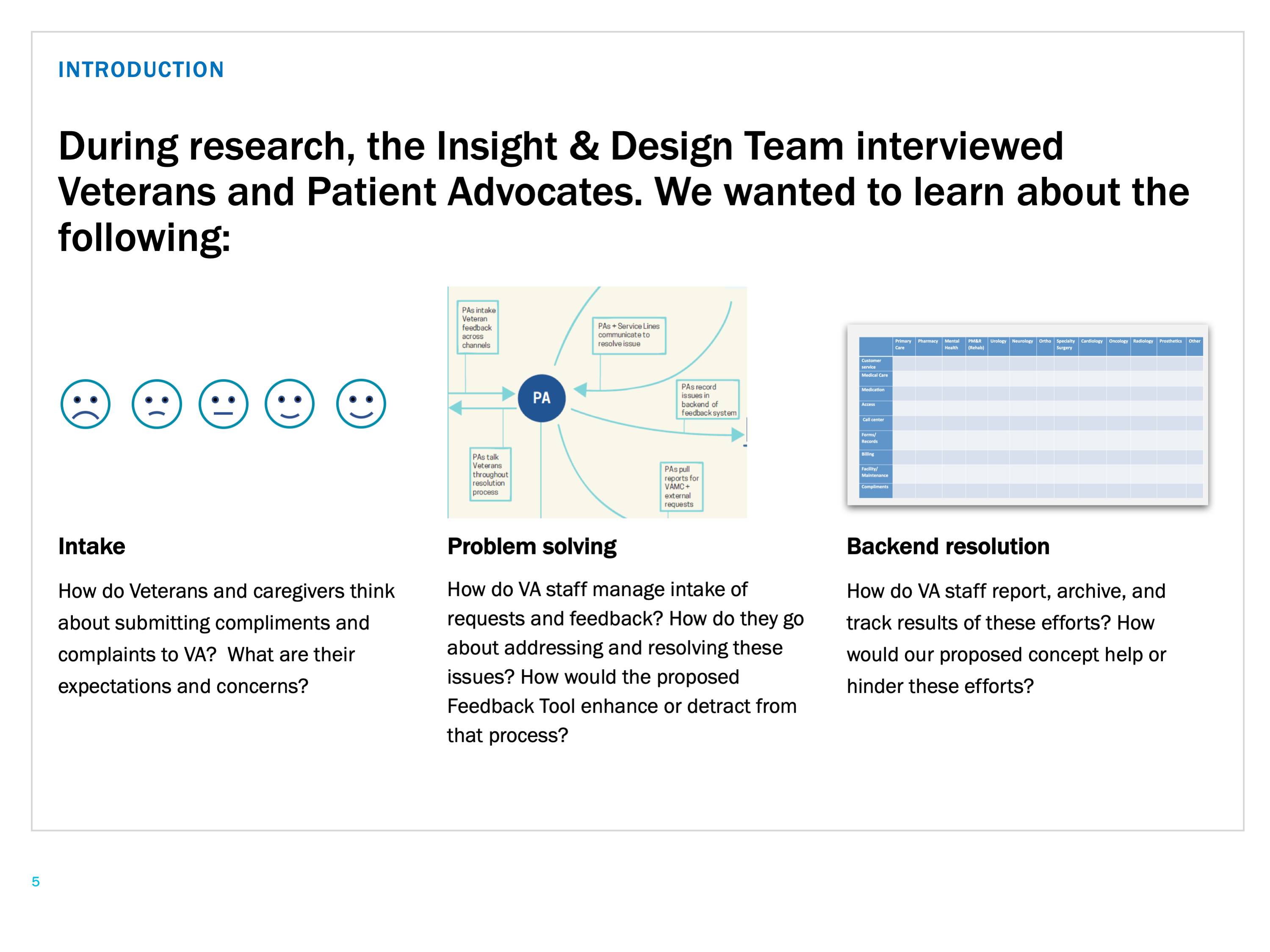
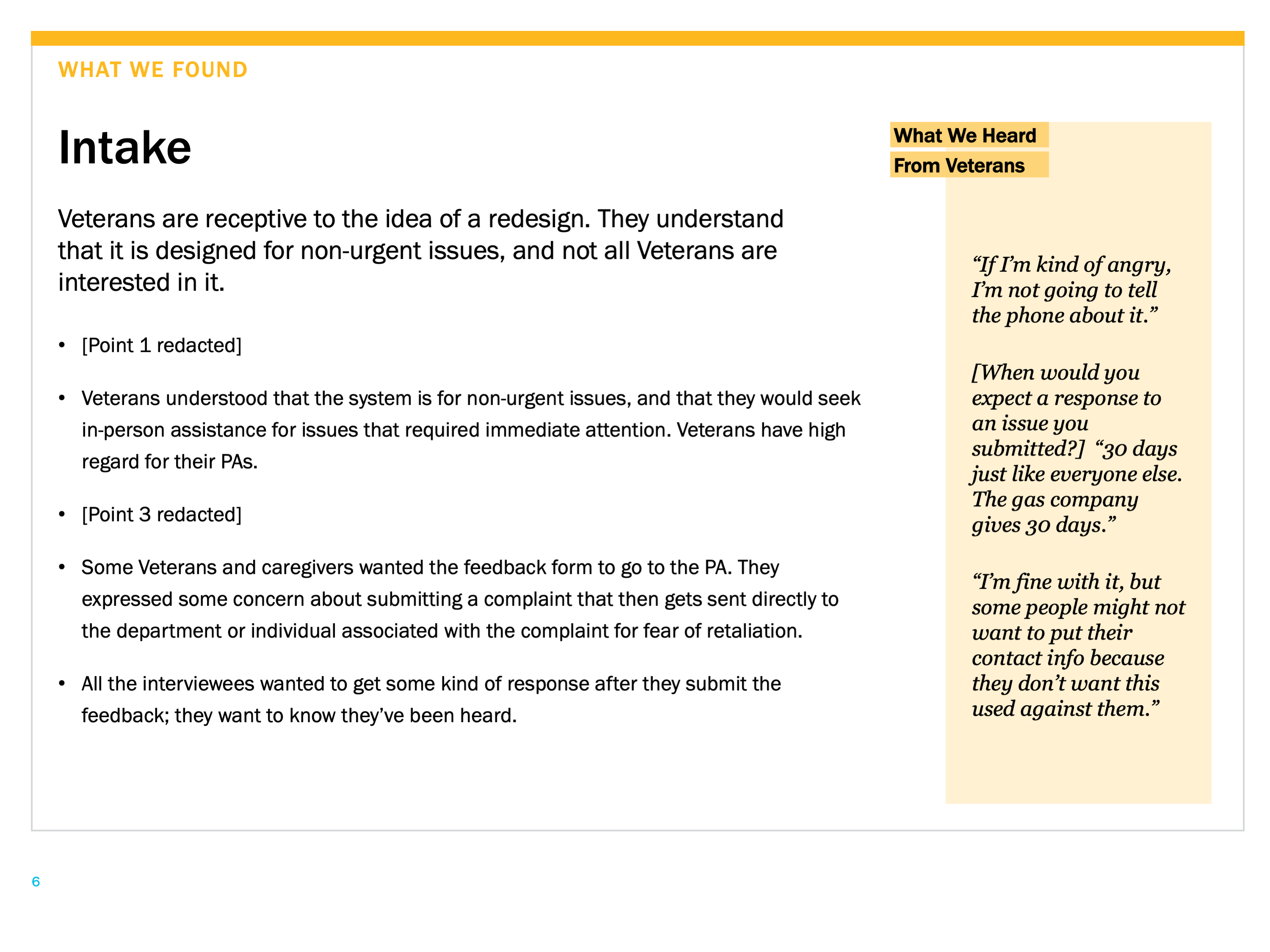


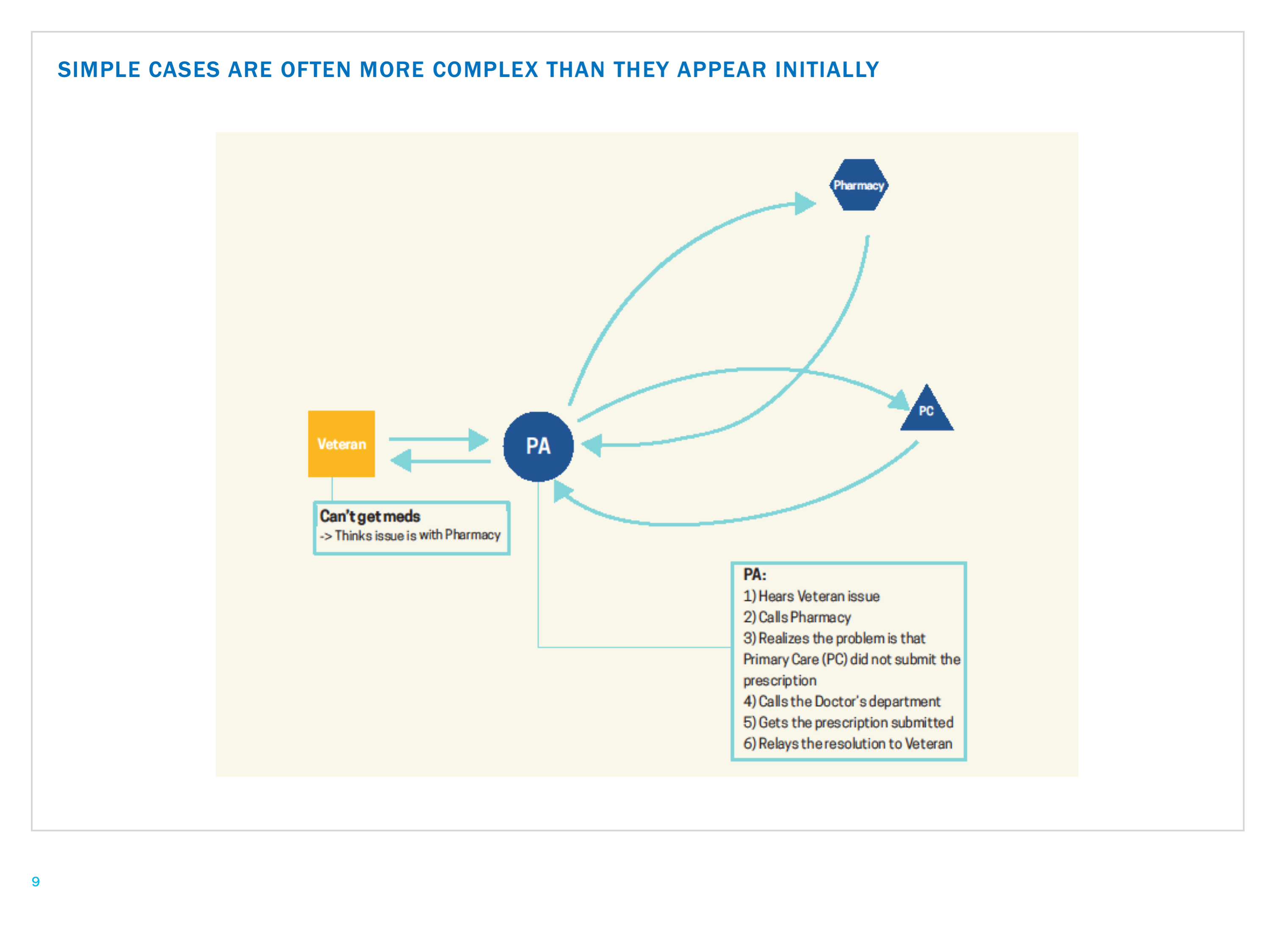
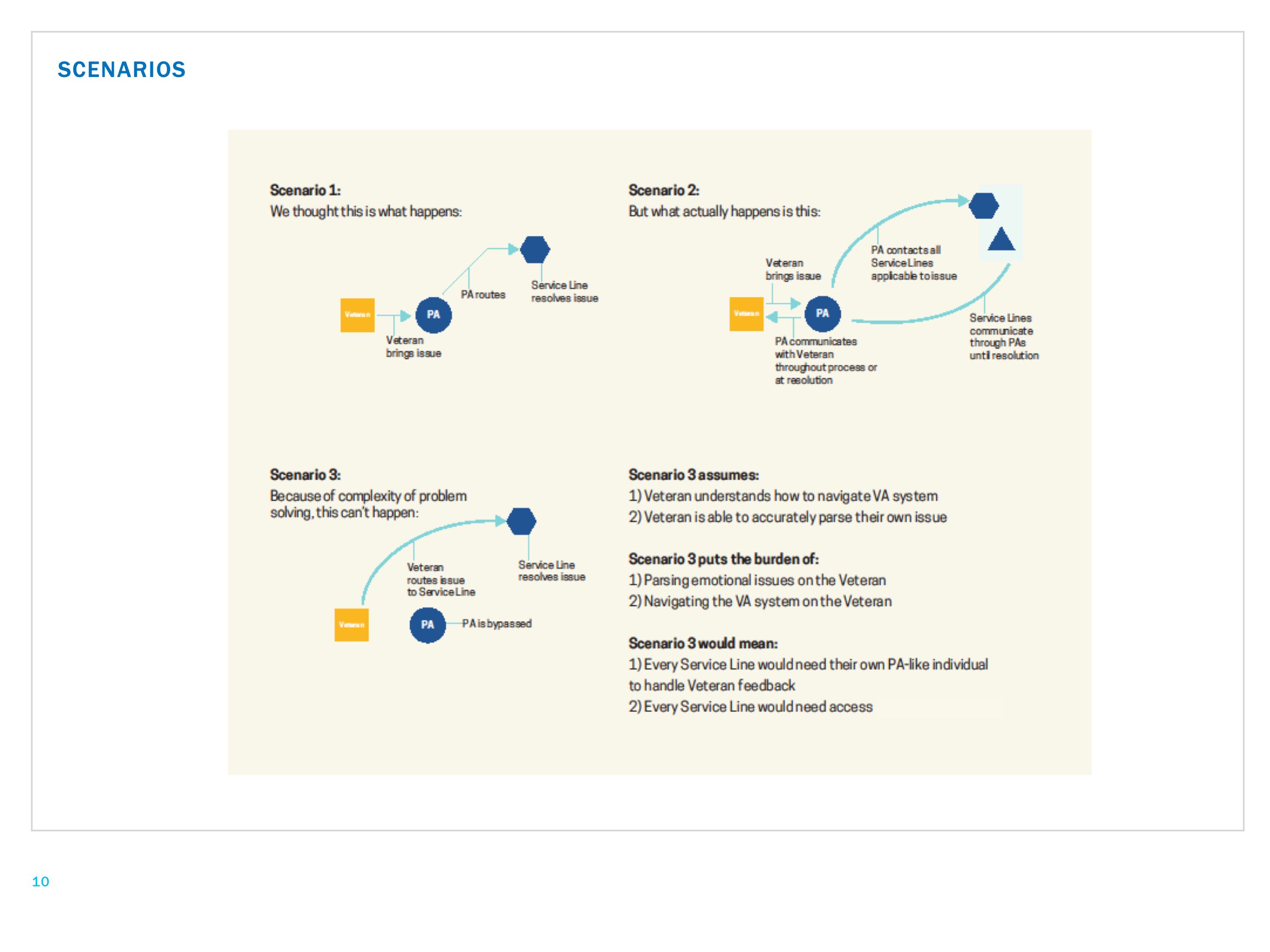
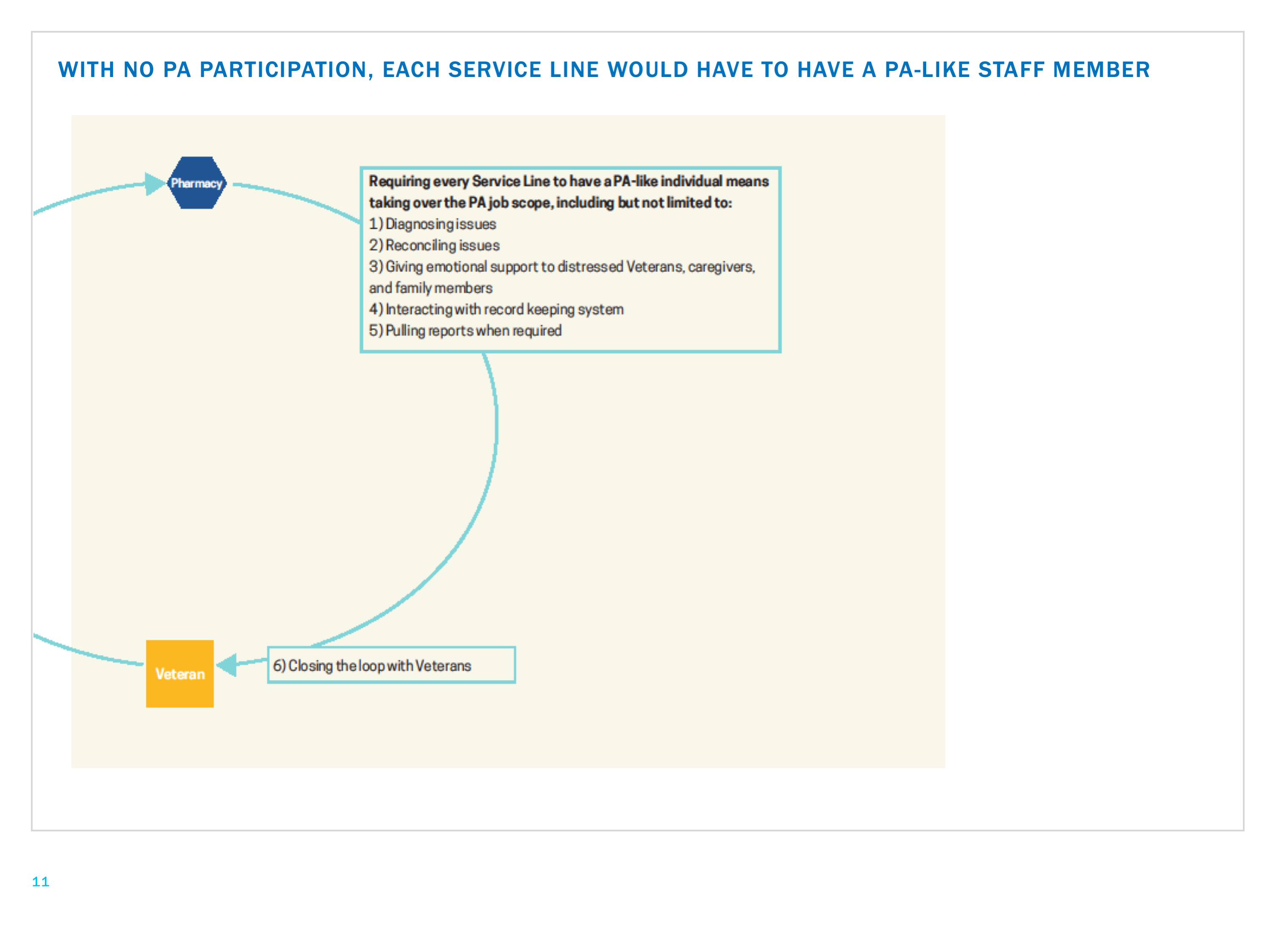
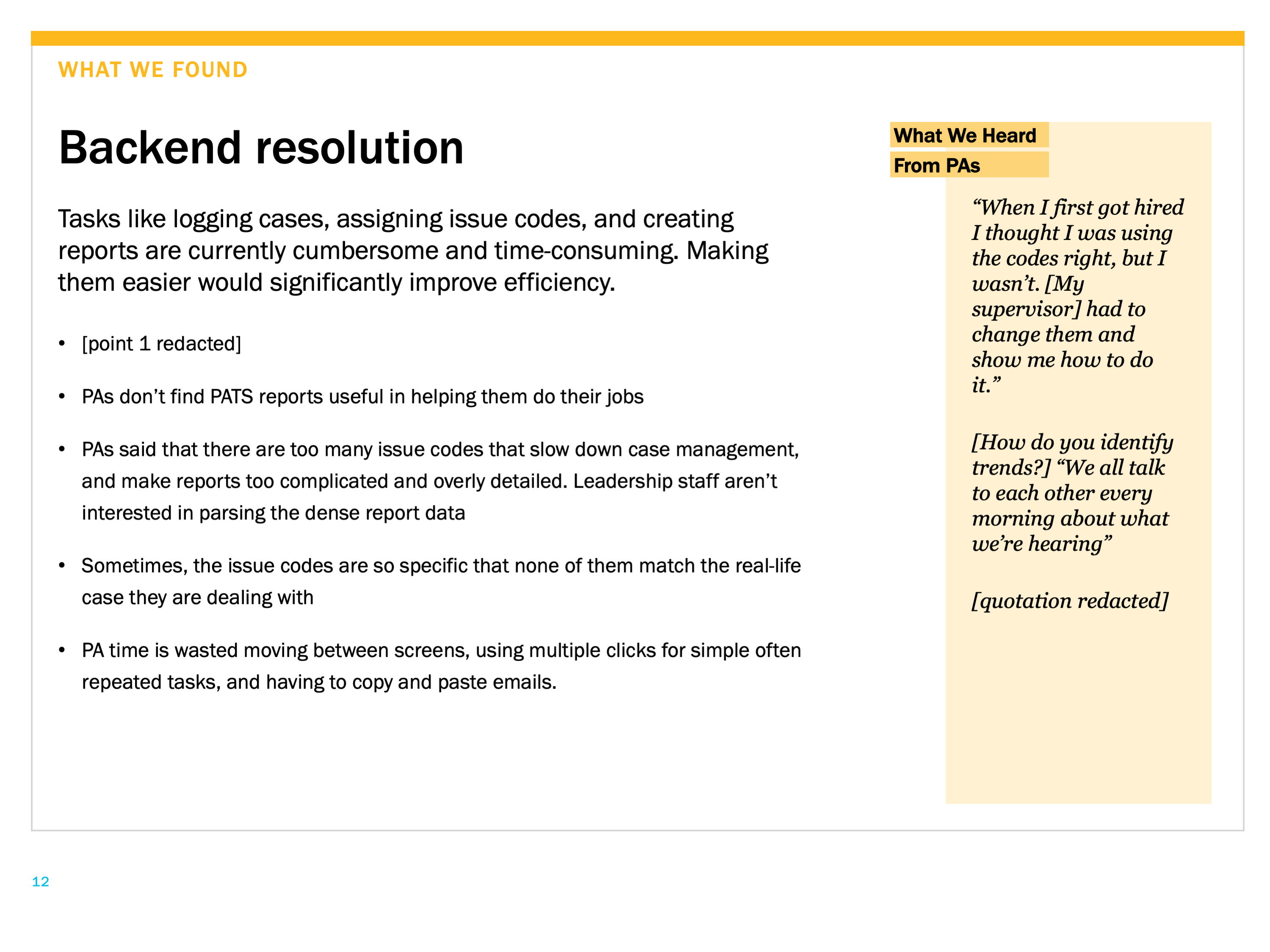

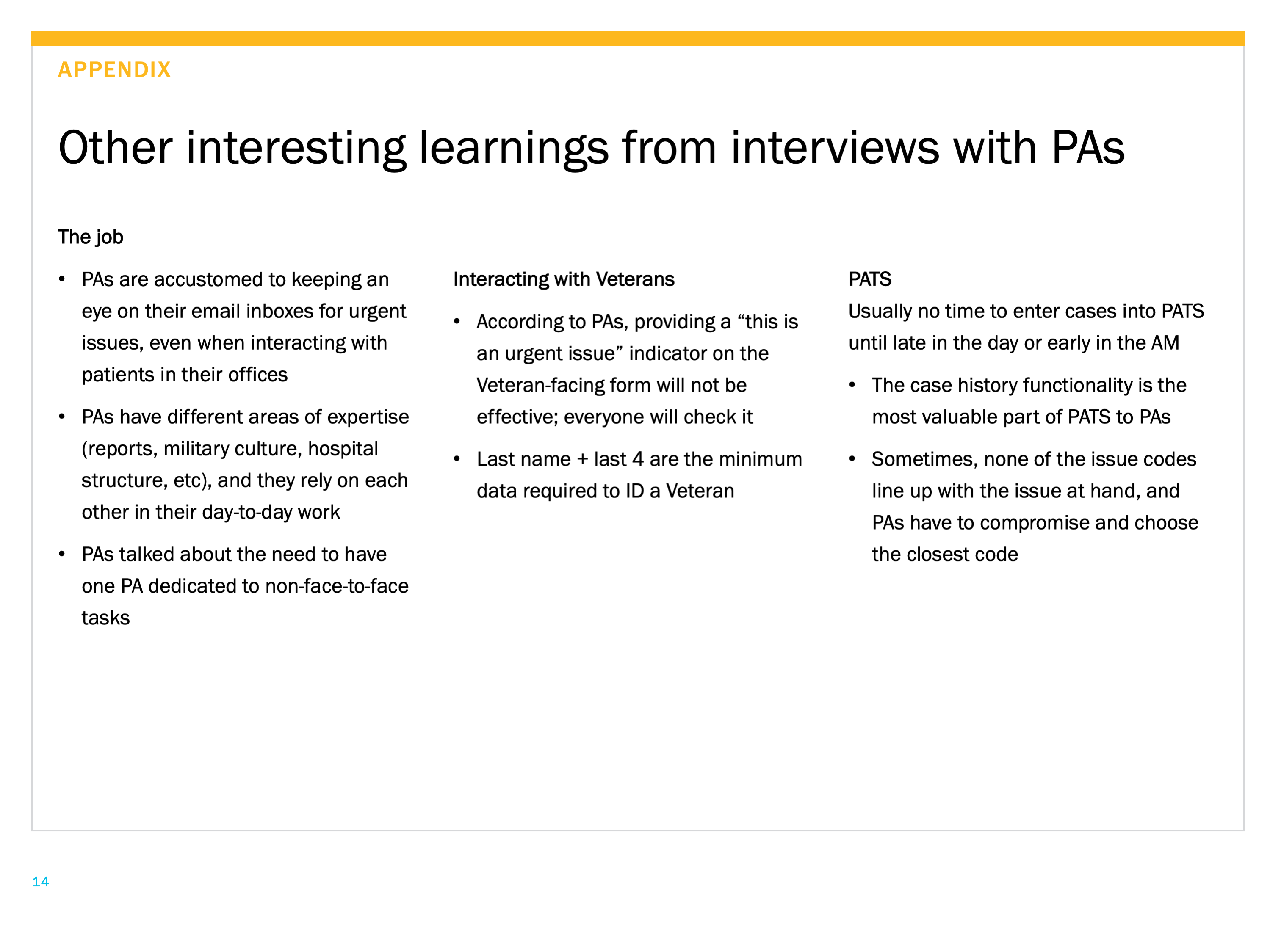
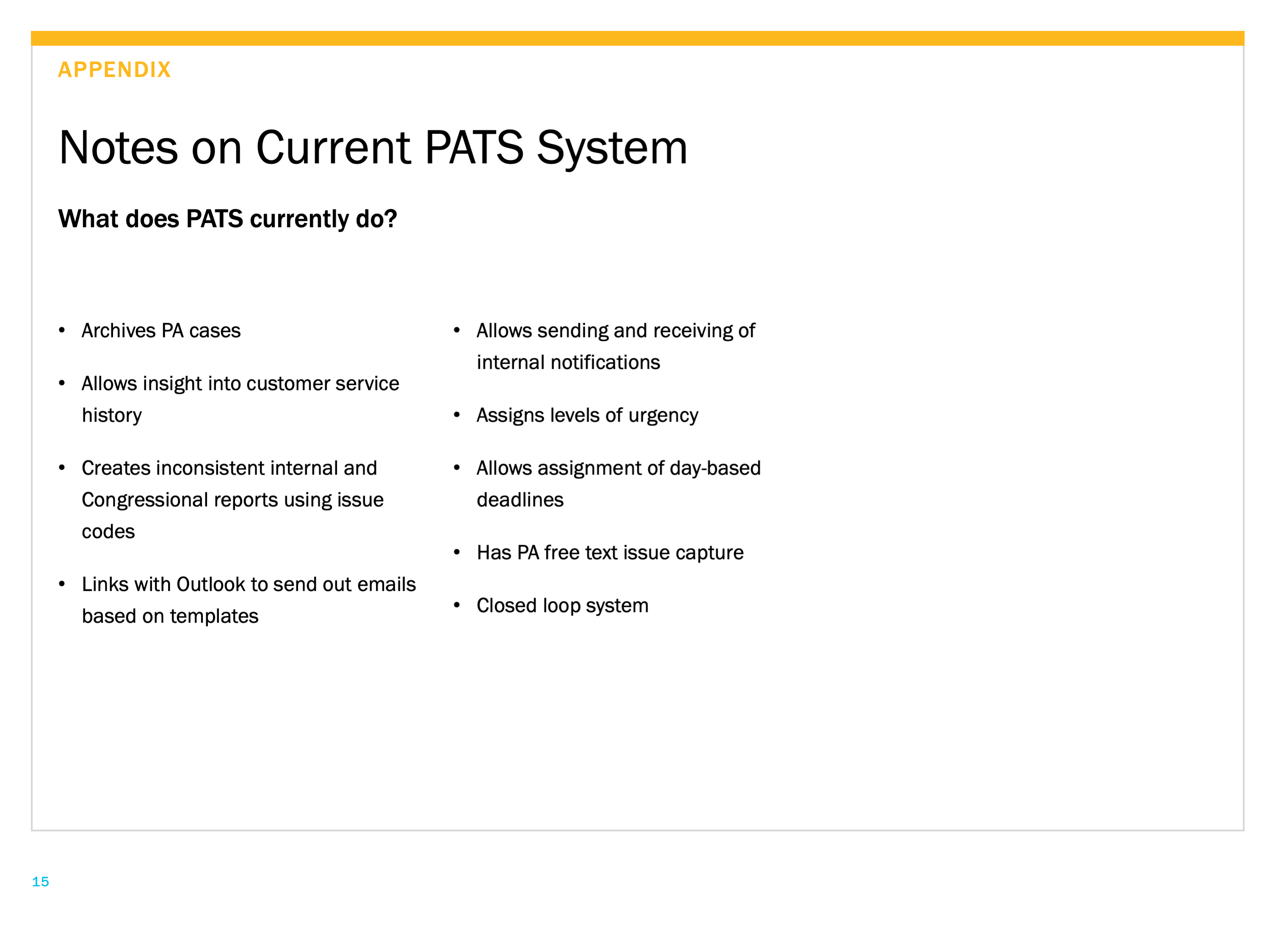


Design
Following a VA-internal review of the research, the PATS-R
project came back to the design team in the fall of 2017. Alongside a
Project Manager from the Veterans Experience Office, I led a core team
of VA employees and design contractors to redesign the first page and
interactive elements of the PATS system.
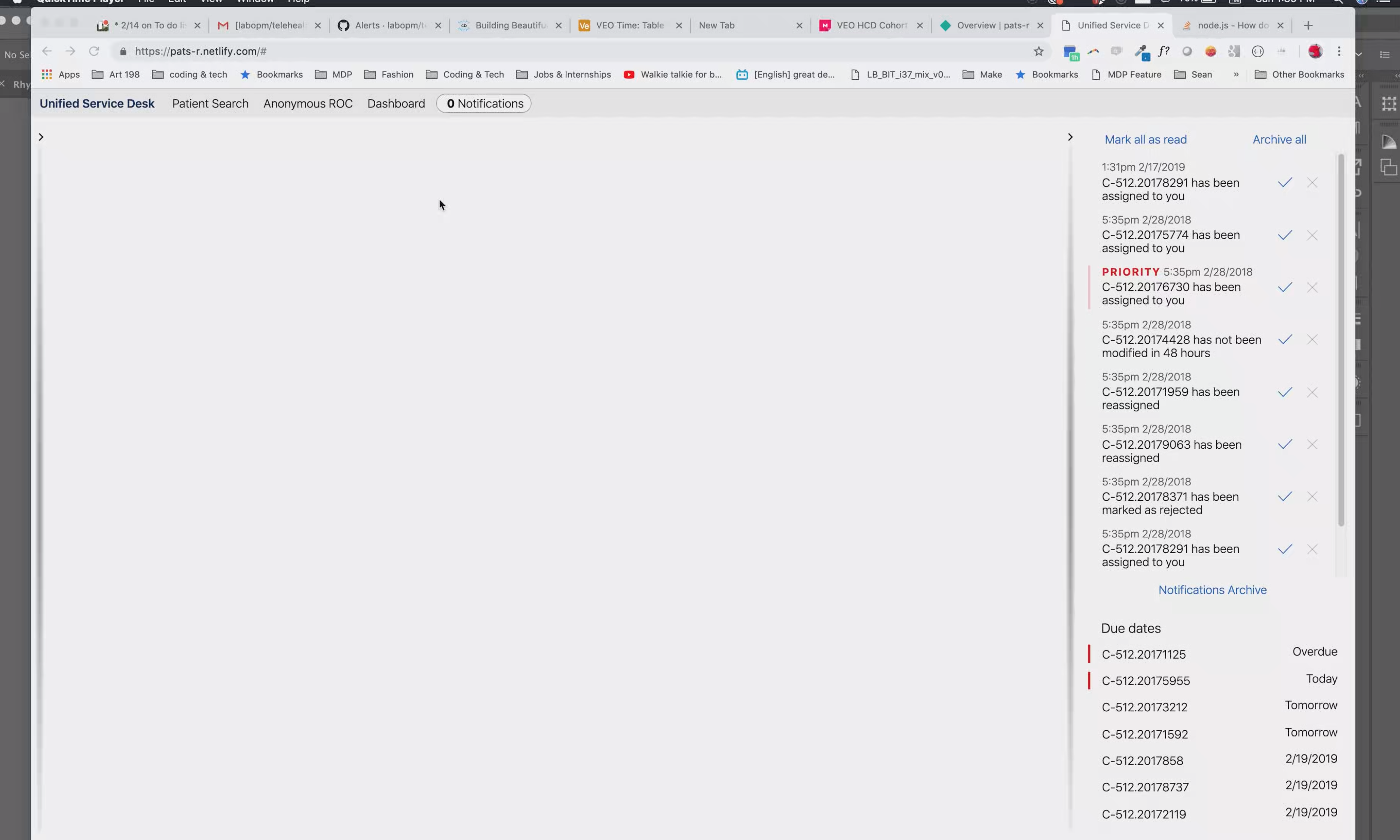
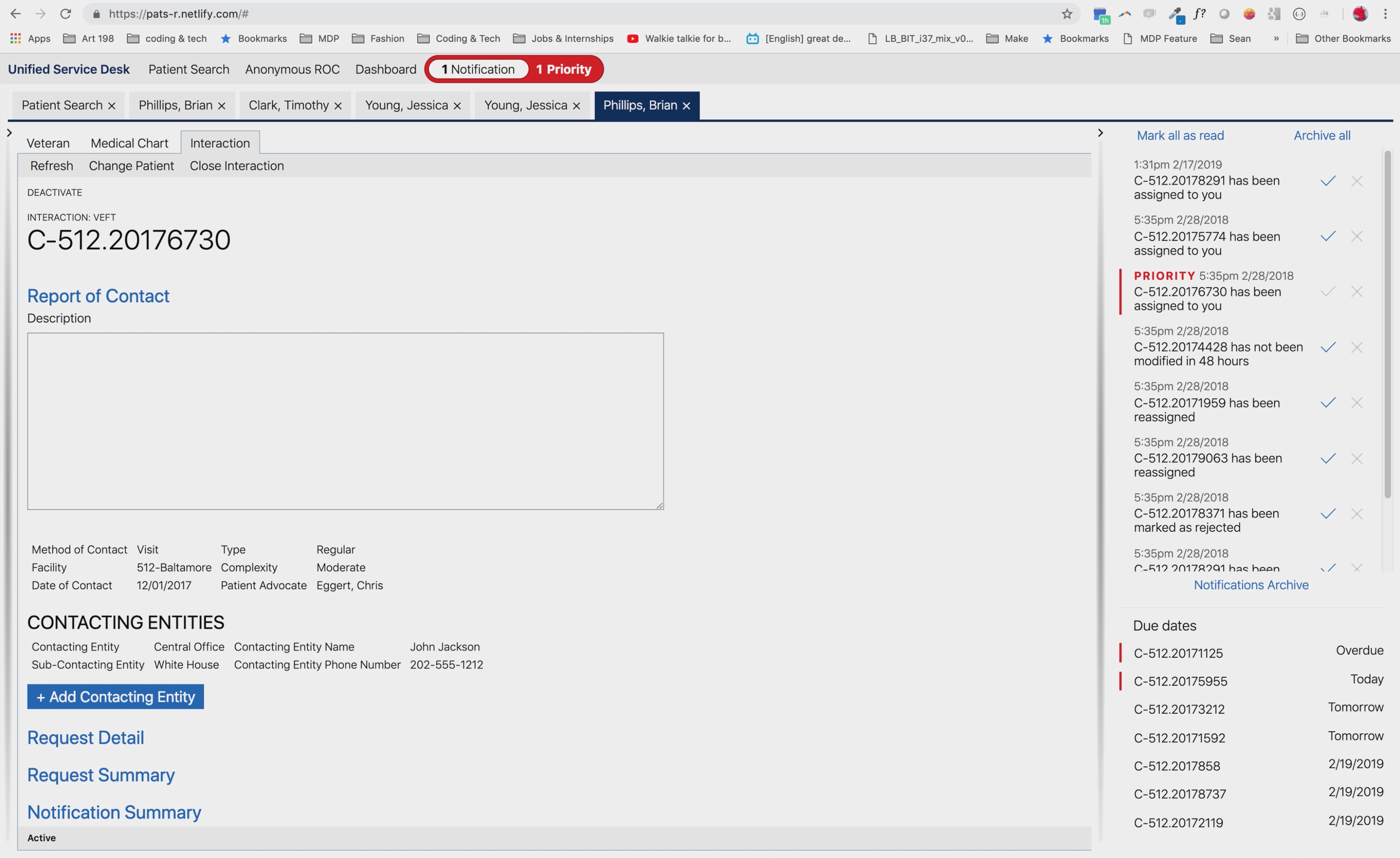
Screenshots of the redesigned PATS prototype. All information in these screenshots and the prototype is fictional. Here is a link to the prototype.
Data Entry Can Be Joyful?
Changes to the interface include the majority of the PA's
requests. We focused on making the data entry system that is PATS the
best version of data entry. Our goal was to make data entry as close
to an actual joy as it could possibly be, so that PAs could focus on
the real challenge of their work: the resolution of complaints inside
a VA Medical Center.
Changes we made include organizing patient information according to the verbal, colloquial terms PAs use in conversation, allowing PAs to toggle between case files as they work, and integrating a "sidedrawer" on the right side of the interface, where PAs can see their issue queue without exiting their current case. Here is a website where you can see and interact with the prototype. All the information in the prototype is fictional.
Implementation
All of our design suggestions were not integrated into the
national version of the PATS redesign, but many of them have been. I
take particular pride in the spread of the rethink of veteran search
screens to reflect the PAs' and other VA employees' natural way of
remembering the veterans they serve. To date, this value of designing
veteran name interfaces around the way VA employees remember names and
veteran information has been integrated into at least one other system
besides PATS.
National rollout of the system continued throughout Fall 2019. The system has to be rolled out across over 150 VA Medical Centers and has the potential to affect all approximately 340,000 VA employees as the data it collects is used for decision-making and service benchmarking. The Measurement phase is up next; we're hoping the PAs' dedication are reflected in a decrease of time spent in this system and an increase in veteran satisfaction with their service at VA.
- These datasets include quantitative data, like how many complaints have been made about parking in the last 30 days, and qualitative data, which takes the form of PAs' notes on veterans' stories of their experiences. Medical Center Directors pull this data to understand how the medical center can improve, while Congress can also request this data for reference in legislation and evaluation. For more on the interplay of data, please see the On Data article.
- As we got to know the job of the Patient Advocates better, we realized that their work requires a complex bundle of skills, including emotional intelligence and creativity. For more on the concept of creativity in seemingly unlikely places, please see the Creativity & Resilience article.

